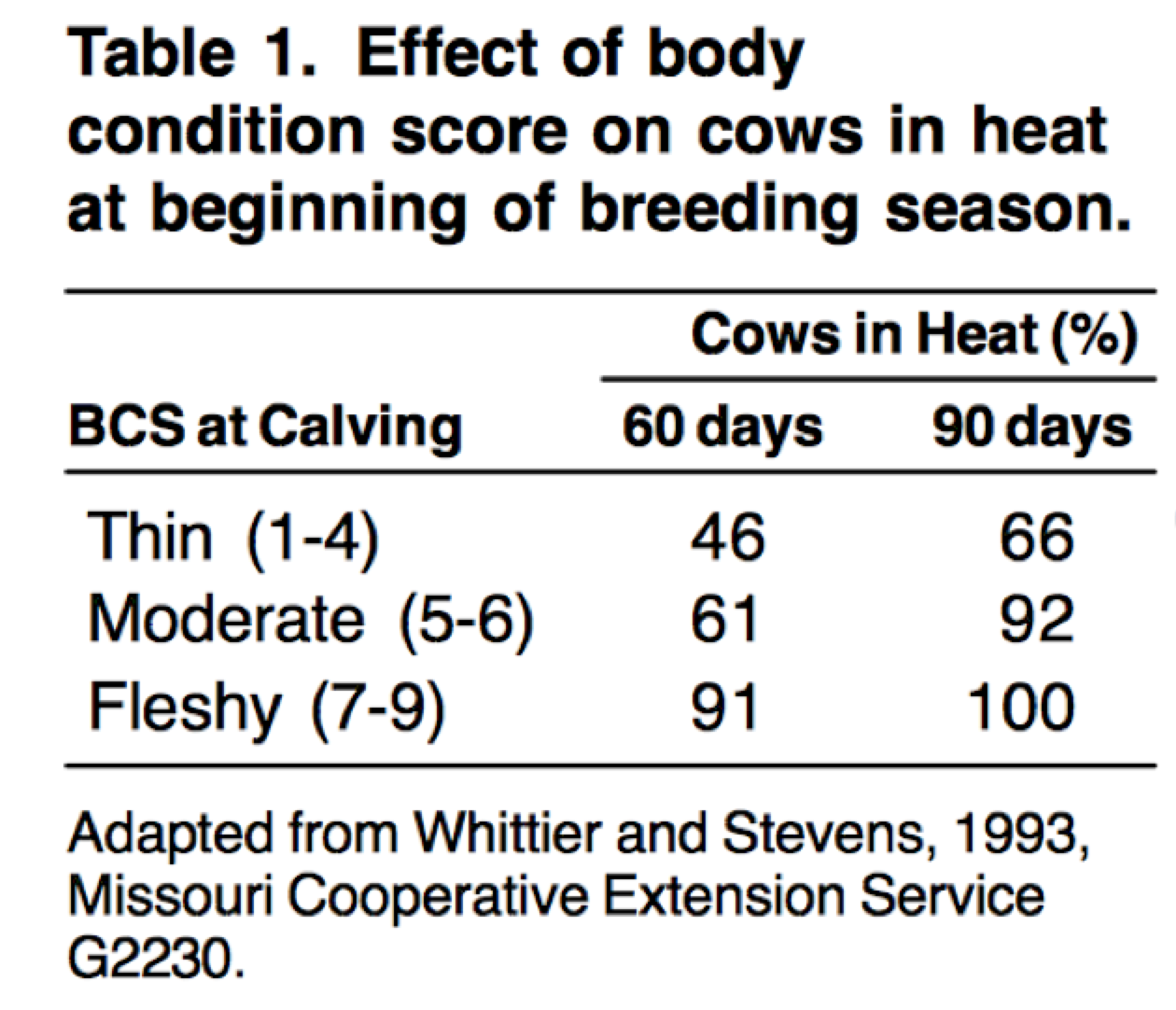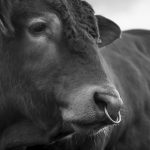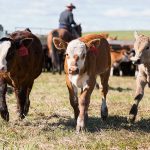Regardless of the time of year when calves hit the ground, you want to make sure you and your cows are prepared.
Now is the time to provide quality nutrition to bred heifers and cows. Producers should be focused on ensuring their body condition can support a healthy pregnancy both in young females and mature cows. In the last trimester the fetus grows rapidly, causing additional nutrient requirements for the cow. Add in cold weather, and you are stacking up the reasons why your nutrition program needs to be up to par.
Research shows that body condition scores (BCS) should be at 5 or higher at calving time for optimal reproductive performance. For cows that are calving in January or February and young cows (two- and three-year olds) a BCS of 5.5 is recommended. BCS is much easier to increase in the fall and prior to calving. Increasing BCS post-calving is challenging and expensive due to the nutrient demands of lactation.
To ensure you understand the quality and value of your current feed sources, we always recommend testing your forages. No matter how many years of experience you have under your belt, it is very difficult to predict the feed value of hay, silage or other feedstuffs without testing. After results are collected, working with a nutritionist to ensure energy, protein and nutrients are at satisfactory levels will ensure that your cow herd is effectively prepared for calving, lactation and quick breed back.
Whether you are in an area that was blessed with an abundance of feed or you are faced with drought and lack of feed resources, maximizing feedstuffs to keep dollars in your pocket is important. Amaferm®, a natural feed additive included in all VitaFerm® products, acts as a prebiotic increasing forage digestibility maximizing the energy and protein in all classes of forages. Amaferm is research-proven to provide a 17% increase in forage utilization. This means you put less in front of your cows while still maintaining an ideal BCS. Complementing this with the right minerals, trace minerals and vitamin package will set your cow herd up for increased production and faster breed back.
Table 1.

Table 1 shows the BCS of cows and the percentages in heat at 60 and 90 days. It is clear that cows with a BCS of five or higher at calving will show a faster return to estrus at the beginning of breeding season.
Additional research by Kunkle and coworkers (1994) concluded that BCS also impacted calving intervals of beef cows. They indicated that as cows moved from thin to moderate in condition score, pregnancy rates increased and the calving interval was shortened. Tighter calving intervals have shown to provide several economic benefits due to a more uniform calf crop and better use of labor.
Table 2. Relationship of body condition score to beef cow performance.

Planning is key to your herd’s BCS. By evaluating females now and working with a nutritionist, you can develop a plan that will generate performance that pays.


